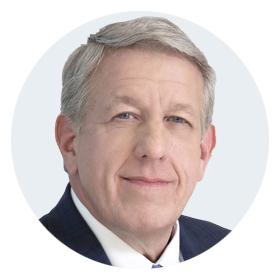Imperial’s Slap on the wrist
A new sheriff is in town
Another example of rural municipalities ignored
Imperial’s Slap on the wrist
Last week in Alberta we had a taste of what it’s going to be like in UCP Alberta. First off was the “Notice of Administrative Penalty” addressed to Imperial Oil Resources Limited (IMO) of $50,000 under section 227(e) of the Environmental Protection and Enhancement Act (EPEA). As the notice, reads the contravention took place on 19 May 2022- more than two years ago and was “confirmed” three months later. The offence was described in a very matter of fact way-
included industrial wastewater, in the industrial wastewater control system in contravention of section 4.2.3(a) of EPEA Approval 46586-01-00, thereby contravening section 227(e) of the Environmental Protection and Enhancement Act.

Layering over the administrative details does little to satisfy an outraged First Nations communities downstream of the plant who must cope with the toxic waste seeping into the Athabasca water system. However, this is how Alberta LLP works, creating a technocratic fortress where, as you will see below, Orwellian language masks the fact that in Alberta LLP economy and money matter more, much more than, human health and safety.
Attached to the “Notice” is a 38-page Administrative Penalty Director’s decision. There were 2 “counts”- the first being a contravention section 227(e) of the EPEA states that-
227 A person who
(e) contravenes a term or condition of an approval, a code of practice, a certificate of variance, a reclamation certificate, a remediation certificate or a certificate of qualification
is guilty of an offence.
Penalties for offences under section 227 (e ) are limited to, in the case of an individual, a fine of not more than $50 000, or in the case of a corporation, to a fine of not more than $500 000. To provide some perspective on these fines, IMO’s net income for the first two quarters of 2024 totaled $2.3-billion, or $13-million a day.
In the summary of his report, the Director stated that:
Instead, taking a holistic view of the facts of the matter, the actual and potential impacts to the environment, and the concerns expressed by the surrounding communities, it was deemed that a more appropriate compliance response would be to require IORL to conduct research to improve the technical understanding of mechanisms that lead to the contraventions and potential effects on the surrounding ecosystem and to ensure that these learnings are shared with other oil sands operators and the surrounding communities. It was also determined that the communities that are identified in the communications plan under the Environmental Protection Order (EPO) dated February 6, 2023, should be directly engaged in conducting these projects to promote transparency and open communication (emphasis added).
It is sadly ironic that one of the chief reasons for taking a “holistic view” is to consider the health effects to First Nations’ people who use water from the Athabasca watershed to drink, shower, bathe and launder clothes. It is unclear given the legal framework how the general public interest is to be construed. See below concerns of RMA about proposals about eviscerating the public interest in project proposals.
An “affidavit”
The report reads like an affidavit that begins with a meeting on 26 April 2024, nearly two years after the “spill,” between Paul Ferensowicz and Andrew Hardy, Project Executive, Kearl EPO and Water Project Team to discuss the Administrative Penalty Assessment (PA). As shown in the chronology, AER staff began working with Imperial Oil soon after the leak. A subsequent meeting laid out a summary of contraventions. On 7 May 2024, IMO asked for a month’s extension to prepare a submission, with a further extension until the end of July. In the meantime, IMO provided “some historical and background information” on Kearl’s application and approval process.
IMO argued that the “basis” on the IMO’s contraventions based on the “Kearl Approval” was incorrect and inconsistent with the intent of the Kearl Application No. 1408771 and related regulatory decisions upon which the Kearl EPEA approval. Clearly, IMO had “lawyered” and “scienced” up and appeared unwilling to fully co-operate with the AER. IMO said they would accept the “monetary penalty.”
The decision goes on to clarify that industrial wastewater includes “water, fluid fine tailings and solids,” which avoids mentioning toxicity levels, but which were subsequently identified later in the document.
The AER estimated the “External Tailings Area” (ETA) to contain an estimated volume of 713 million cubic metres of this material, or 7.13 trillion litres. The north side of the ETA is approximately 5 km east-to-west, and the east side of the ETA measures approximately 2.5 km north-to-south (as measured on Google Earth).https://www.google.ca/imgres?q=Imperial%20Oil%20Kearl%20Lake%20site%20map&imgurl=https%3A%2F%2Fglobalnews.ca%2Fwp-content%2Fuploads%2F2023%2F03%2FSeepage-points.jpg%3Fquality%3D85%26strip%3Dall&imgrefurl=https%3A%2F%2Fglobalnews.ca%2Fnews%2F9523133%2Falberta-band-chief-imperial-oil-kearl-oilsands-tailings-spill-silence%2F&docid=VDEnbnJybXJtXM&tbnid=PPqjA07SExHDOM&vet=12ahUKEwigk7f2zZWIAxXdhP0HHbUqDMEQM3oECE0QAA..i&w=863&h=592&hcb=2&ved=2ahUKEwigk7f2zZWIAxXdhP0HHbUqDMEQM3oECE0QAA
The decision is heavily reliant on terms unfamiliar to the layperson. The following paragraph gives insight into this highly technocratic and legal process which serves to eliminate most of the population from understanding the big picture of what is actually taking place, namely Kearl continues to release million of litres of “industrial wastewater” into a gigantic pond near the Firebag River basin.
The AER agrees with IORL’s clarification respecting its hydrological model. The paragraph on page 12 of the PA should be modified as follows:
IORL stated of its hydrological model did not fully model confining sediment layers between shallow groundwater and deep groundwater, where the Seepage Interception System (SIS) is located: “In addition to the sand fill layer, shallow discontinuous in-situ aquitards (Quaternary glacial sediment) are present in the vicinity of Kearl’s north lease boundary. These aquitards have a low hydraulic conductivity that can restrict the flow of liquids from the shallow groundwater systems to the deeper areas where the SIS is located. At the time of the system design, Imperial’s hydrogeological models did not fully represent the extent of these layers” (IORL RCFA, 2023- emphasis added).
[An aquitard is a “low-permeability unit that can store groundwater and transmit it slowly from one aquifer to another.”]
In this exchange of technical interpretations, the Director notes his “concerns about both IORL’s interpretation of the approval conditions and the characterization of previous decisions made in respect of oil sands projects.”
IMO also challenged the AER on the “Type of Contravention and Potential for Adverse Effect,” which the AER considered “major.” The AER scientific evidence consisted of samplings in August 2022 which
indicated various guideline exceedances of sulphate, iron, several total and dissolved metals, and in one location near the on-site waterbody on the eastern edge of the site, a single exceedance of F2 hydrocarbons. IORL’s December 2022 sampling indicated various guideline exceedances of iron, total arsenic, total sulphide, and sporadic metal exceedances (e.g., total cadmium, total chromium) at the seep locations.
The contravention largely hinges on the legislative wording of “actual or potential loss or damage,” the Director stated while noting that “actual impacts to the watershed and surrounding environment appear to be minimal, as to date no observed impacts to fish, amphibians, or other wildlife have been reported” (emphasis added).
Another point debated by IMO was whether the leaks led to a “significant adverse effect.” The AER rebutted the claim because the test is adverse effect, not significant adverse effect. The Director nicely summed up his findings as follows:
In consideration of the above, given the amount of fluid in the ETA, its varied constituents, the various seepage release points, including in proximity to an on-site fish bearing waterbody, and an as-of-yet indeterminate amount of time in which the industrial wastewater was being released and could have been released from the shallow seepages, the potential for adverse effect is assessed as “Major” (emphasis added).
It is interesting to note however that the conclusions do not specifically refer to dangers to human health.
In the PA, the fine assessed totals $50,000 being ten months times the maximum monthly fine of $5000.
In Appendix A, called the “Preliminary Administrative Penalty Assessment,” more details are revealed of what transpired on May 19th 2022 when IMO formally notified AER of its discovery of “orange discoloured surface water in four locations near the External Tailings Area (ETA).”
In its “root cause analysis” in May 2023, IMO “determined that a shallow subsurface pathway from on-lease industrial wastewater sources bypasses the existing deep groundwater Seepage Interception System (SIS), which resulted in in the off-lease release.”
The chronology after the May 19th “discovery,” documents discussions and work carried out by IMO and provides more detail about the contaminants released. Those exceeding the Alberta Environmental Protection levels included fluoride, dissolved iron, total arsenic, total sulphide, and “sporadic metals exceedance -T. Cadmium, T. Chromium, T. Cobalt. T. Copper, T. Lead T. Nickel, T. Selenium, T. Zinc.”
Opinion
The regulatory environment favours the regulated companies who can afford expensive legal and technical advice which supports IMO’s and the rest of the industry’s aim of continuing to produce bitumen and expand production. The regulatory process for average Albertan and First Nations’ communities is complex and very expensive to navigate.
Over the past sixty years, the oilsands industry has become increasingly concentrated with only four companies controlling over 80 per cent of the production of 3.4-million barrels a day. Over the past decade, the provincial treasury has become increasingly reliant on bitumen royalties which can constitute more than one quarter of Alberta LLP’s total own source revenue.
| Alberta LLP is similar to Québec Inc. but there are differences. Quebec’s majority francophone population has survived cultural assimilation. In Quebec, the business elite was English speaking until the Quiet Revolution began to change this. The Caisse de dépôt et placement du Québec , the brainchild of Jacques Parizeau was central to supporting francophone businesses
 and offered a source of employment to Quebec’s investment professionals. The Caisse’s twin mandate to invest pensioners’ funds and to maximize return while supporting Quebec’s economic development has mixed results. On the one hand, the Caisse has been supportive of the Beaudoin family’s aerospace venture Bombardier which has not been a poor investment. On the other hand, the Caisse’s support of CGI and Alimentation Couche-Tard has produced dominant market players inside and outside Quebec. Alberta LLP strives to emulate Quebec in a number of areas- to take away over $100-billion in investment assets of the Canada Pension Plan and to manage these funds either through AIMCo or private investment managers. It is likely that if this is achieved, more funds will be invested in resource extraction to support the current government’s bet on increasing bitumen production. Second, greater control over immigration policy is crucial to forge the type of workforce for Alberta LLP. Judging by moves in the post-secondary system, the government wants more trades people crucial for expanding resource production. Alberta is also examining the possibility of taking over personal tax revenue collection from the federal which Quebec has operated for decades. Thirdly, a centralized police force like Sûreté du Québec is a goal for the Smith administration (see below). Alberta LLP is not merely economic nationalism it is also about fossil fuel extraction and the oilsands growing importance to the energy security of the United States. The three central elements -control of the justice and policy system, control over resource development manifest is strong push back against Ottawa’s environmental policies, and control over revenue and personal tax policy are pivotal to the Alberta LLP project. Interested readers should look at Moment of Truth for more detail. Unlike Quebec, Alberta is the most American of all Canadian provinces through immigration and the cross-border interchange of executives in the oil patch. |
As discussed below, there is a clear and present danger that the “public interest” test, which not only gives the AER tremendous discretion, but also gives an assist for not-to-profit organizations and First Nations to achieve standing before the highly technocratic and legalist AER, may be removed for project approvals. As the RMA president stated recently it is “shocking” to think the government was even considering elimination of the public interest test.
There is also a potential link between oilsands and other fossil fuel development- the consolidation of Alberta’s police forces under one organization. Call me paranoid but police actions in Calgary and Edmonton on university campuses under nominally municipal direction, suggest a consolidated Alberta police force may be employed quite effectively to “control” protesters at remote development sites. Provincial encouragement of the Edmonton Police Service to clear encampments is another example of state use of legitimate force to erase legitimate efforts of impoverished communities to escape institutionalization.

Rural Municipalities, Taxes and the Oilpatch
On 22 August 2024, Bob Weber of the Canadian Press released a story carried by the CBC, the Edmonton Journal and subsequently The Globe and Mail.
The story arises from a news release of 16 August by the Rural Municipalities Association (RMA) which reported that Brian Jean, the Ministers of Energy and Minerals had written announcing an “expansion” to the payment of property taxes from the oil and gas industry. Going forward the RMA “is seeking clarity in several areas related to the tax arrear threshold and grace periods required to trigger enforcement, details on the nature of enforcement action that will be taken, reporting expectations on municipalities, and other areas”.
This followed an announcement the previous month by Minister Jean that the government would relax rule on buying oil, gas wells if municipal taxes unpaid.
The communique was banale compared to the tone of the article which followed about a week later by Bob Weber. The Globe and Mail headline read “Alberta Oilpatch policies harming tax base, rural municipalities group says,” while the Edmonton Journal headline read “UCP oilsands rules unfair: municipalities.”
THE RMA has five policy priorities according to the story.
- Allowing transfers of producing wells even if the transferor has left unpaid municipal taxes;
- Allowing older declining wells to keep producing in the mistaken belief that municipal taxes and regulatory requirements are standing in the way of extraction;
- Allowing the regulator to exclude the public interest in its consideration of applications;
- Allowing companies to operate without paying municipal taxes and leaving environmental obligations unfulfilled; and
- The three-year tax holiday for new wells and pipelines has cost nearly $9-billion in reduced assessments.
Although the16 August release was sanguine about the UCP government listening, the RMA president Paul McLauchlin was pulling no punches noting, in respect of removing the public interest test
“I think it is shocking they want to do that. They would just become complicit and part of the whole industry. Who is actually working for Albertans?”
There’s a new sheriff in town
As reported by the Edmonton Journal his name is Curtis Zablocki, the former RCMP officer in charge of Division K which is the RCMP’s nomenclature for Alberta. Zablocki’s title will be Assistant Deputy Minister in charge of Public Security Division in the Ministry of Public Safety and Emergency Services.

There was immediate praise for this appointment. Zablocki’s successor Bob Hill said that Zablocki has an “excellent level of understanding and valuable insight regarding police operations and the needs of the communities across Alberta. He also brings with him strong relationships with the province’s municipal services and understands the unique environments they work in.”
The new hire was based on an “open and thorough competition,” stated a department official.
The emceed event featured praise for Zablocki from the Edson detachment commander who referred to Zablocki’s Commanding Officers’ Diversity Advisory Council.” How diversity will play inside the Government of Alberta remains to be seen. The staged event emphasized reconciliation, Hill acknowledging “we also recognize that the RCMP hasn’t always been on the right side of history.”
Deputy Commissioner Hill was asked about the question of a provincial police force, Hill responded saying “we are the provincial police.” He also contributed the thought that “public safety” is both what the provincial government and Hill, as the RCMP’s representative in Alberta, want.
As the UCP rolls out its plans to follow in the footsteps of Quebec Inc., control of Alberta police forces becomes essential. Although Smith downplayed terminating the RCMP contract during the recent election, the celebratory appointment of Alberta’s top cop, who has strong credentials to unify Alberta’s growing sheriff workforce, RCMP policy and municipal policing, suggests this part of Alberta LLP project is in capable hands.
Related Posts
Alberta election: Is the province’s energy regulator acting in the public interest?